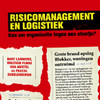 Now this may seem totally off topic, but I have become so engrossed with modern-day supply chains that I have forgotten that supply chain disruptions have occurred as frequently in the past as today, and particular within the military in war times. A supply chain serving a war machine is under extreme strain, but is an essential element in winning or losing not only a battle or two, but an entire war.
Now this may seem totally off topic, but I have become so engrossed with modern-day supply chains that I have forgotten that supply chain disruptions have occurred as frequently in the past as today, and particular within the military in war times. A supply chain serving a war machine is under extreme strain, but is an essential element in winning or losing not only a battle or two, but an entire war.
War and supplies
Why is a functioning supply chain so important during war? Because
without an adequate supply chain, no nation can win a war.
I came across the sentence above in a blog post about German railway transport during WWII when searching WordPress blogs for “supply chain disruption”. The blog post attributes Germany’s defeat not only to the bravery and persistence of the allied forces, but also to the inherent weaknesses in the German and German-occupied railway systems.
The German Transport System during WWII
The post, titled German Transport System WWII, describes how the German Reichsbahn, an amalgamation of the former state railway systems, was forced to absorb a vast network of railways in varying condition, and locomotives and rolling stock that were often incompatible. As there were few common designs the new railway system was burdened by operational problems, increased and often duplicated costs and a maintenance headache of mammoth proportions.
By war’s end the German railways were a barely functioning shambles, though some services were still operating remarkably efficiently. With the flow of spare parts, replacement troops, fuel, munitions and rations slowed to a trickle by the collapse of the railways the effectiveness of German forces decreased dramatically.
Six years earlier the German railways were hard pressed to supply Germany’s war needs and they never were able to. Without an adequate supply chain, no nation can win a war.
Well-functioning supply chains are essential to our daily lives. They become even more essential in times of crises and emergencies, including war times. If you want to know more about this, the New Zealand research project Resilient Organisations has taken a closer look at this topic.
Links
- resorgs.org.nz: Resilient organizations
- War and Game: German Transport WWII
Related
- husdal.com: Are roads more important than computers?












